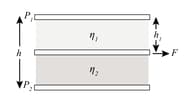The free surface of a liquid at rest kept in a container of reasonably large size is always seen to be horizontal. This is due to
(I) the absence of relative velocity between the liquid and the container
(ii) the absence of relative acceleration between the liquid and the container
(iii) gravitational energy is constant on a horizontal surface
(iv) Bernoulli's theorem

Important Questions on Properties of Solid and Liquid
The velocities of the liquid which flows in the two sections of a horizontal tube have areas of cross-section and , are and respectively. The difference in the levels of the liquid in the two vertical tubes is . Then
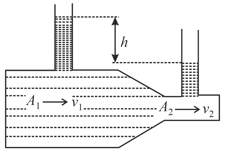
A cylindrical container containing water has a small hole at height of from the bottom and at a depth of from the top surface of the liquid. The maximum horizontal distance travelled by the water before it hits the ground is
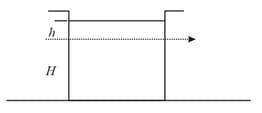
A tank is filled with water up to a height . Water is allowed to come out of a hole Pin one of the walls at a depth below the surface of the water. Express the horizontal distance in terms of and .
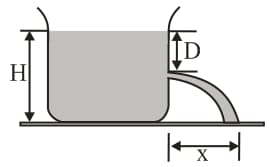
A water tank is filled upto height and is being emptied through a small hole at the bottom. Ratio of time taken for the level of water to fall from to and from to zero is
A non-viscous ideal fluid is flowing vertically downwards in a pipe. The area of cross-section at section is double that at section . Vertical distance between section and section is $h$ and the height of water column in tube is more than that in tube by $\frac{\mathrm{h}}{2}$ distance. Velocity of the fluid at section $\mathrm{A}$ is
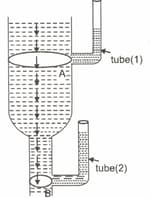
A thin horizontal movable plates is separated from two fixed horizontal plates and by two highly viscous liquids of coefficient of viscosity and as shown, where . Area of contact of movable plates with each fluid is the same. If the distance between two fixed plates is , then the distance of movable plate from upper fixed plate such that the movable plate can be moved with a constant velocity by applying a minimum constant horizontal force on movable plate is (assume velocity gradient to be uniform in each liquid).
